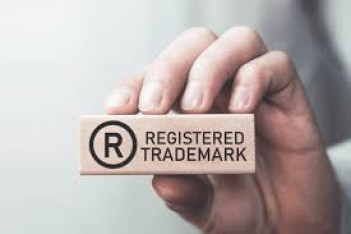Software Rights Transfer
Transferring software rights is one of the most critical stages in protecting digital assets and intellectual property.
In the U.S. market, such transactions can involve full ownership transfer, long-term licensing, or hybrid models combining both.
Modern firms commonly count on file transfer software to provide sensitive resource code, arrangements, and paperwork in between stakeholders during due diligence or post-deal assimilation.
These tools assure privacy and auditability at every deal phase.
Key Considerations
Prior to transferring possession, numerous essential factors need to be addressed to avoid future insurance claims or conformity violations:
- Rights Being Transferred — exclusive or non-exclusive, full or partial, time-limited or perpetual.
- Other Contributors — employees, freelancers, or subcontractors must have signed rights assignment agreements.
- Third-Party Components — libraries, frameworks, and dependencies must be verified for license compatibility.
- Jurisdiction — choosing U.S. law ensures enforceability and predictable dispute resolution.
- Registration — optional but recommended for proof of ownership in litigation.
To manage complex documentation across departments, corporations frequently deploy data transfer software — secure systems designed for internal compliance and traceable content delivery between legal, technical, and finance teams.
Transfer Forms
The type of transfer defines both the scope of control and ongoing collaboration options.
Each form provides a different balance between flexibility and exclusivity.
Common approaches include:
- License — allows the buyer to use the software while ownership stays with the developer.
- Full Assignment — all rights move to the acquirer, often following a comprehensive audit.
- Combination Model — hybrid between licensing and assignment, ideal for modular or co-developed software.
In corporate transactions, enterprise-grade protection is critical. That’s why large-scale deals often use enterprise file transfer software for managing encrypted data flows and verifying digital signatures across multiple business units.
Essential Contract Provisions
An effective contract protects both parties, defines scope, and prevents misunderstandings.
Key elements typically include:
- full description of transferred rights and restrictions;
- confirmation of all contributors and co-authors;
- warranties of title and authority;
- source code delivery and escrow setup;
- liability, indemnification, and payment details;
- post-transfer confidentiality terms.
As organizations digitalize their legal processes, they also evaluate tools such as file transfer programs belong in what software category, where managed IT infrastructure and secure exchange platforms are central.
Technology and Security
When transferring source code, every byte matters. Businesses mitigate risk using secure file transfer software, which ensures encrypted exchange between legal, IT, and financial departments.
For complex or recurring operations, teams may automate workflows using file transfer automation software, minimizing human error and ensuring version control during multiple iterations.
For enterprises seeking broader control, secure managed file transfer software provides compliance-ready infrastructure. Some important comparative studies in this area, such as managed file transfer software comparison, help organizations identify the most suitable platforms for regulatory or cross-border environments.
In regulated sectors like fintech or defense, where security breaches are unacceptable, money transfer software is often integrated with legal systems to ensure financial transparency and auditable movement of intellectual property payments.
At the same time, pricing and compliance teams employ transfer pricing software to maintain tax consistency across international operations involving software transfers and intangible assets.
Registration and Legal Reinforcement
Although registration with the U.S. Copyright Office is not mandatory, it strengthens the transferee’s rights in court, simplifies damage recovery, and boosts investor confidence.
Enterprises managing high-value intellectual property often count on the best managed file transfer software to securely send documents, store registration proofs, and maintain encrypted backups.
In addition, incorporating encrypted file transfer software throughout the submission and verification procedure avoids information leaks, ensuring that all products continue to be private and traceable.
Risk Mitigation Checklist
To prevent disputes and data loss, follow a disciplined approach:
- verify authorship and all contributor agreements;
- confirm open-source compliance;
- register key transfers for legal protection;
- use automated, auditable file exchange platforms;
- apply strong warranties and indemnities in contracts.
These preventive steps form the foundation of a secure digital transaction environment. By addressing both legal and technical aspects early, companies ensure smooth ownership transitions and long-term protection of their software assets.
ConclusionProperly executed software rights transfer ensures legal clarity, business stability, and technological continuity. Using enterprise file transfer software helps manage code, documents, and related assets safely during and after the transaction.
With more complex projects, secure managed file transfer software adds an extra layer of protection, supporting encrypted data exchange and ensuring compliance with legal and regulatory requirements.


































